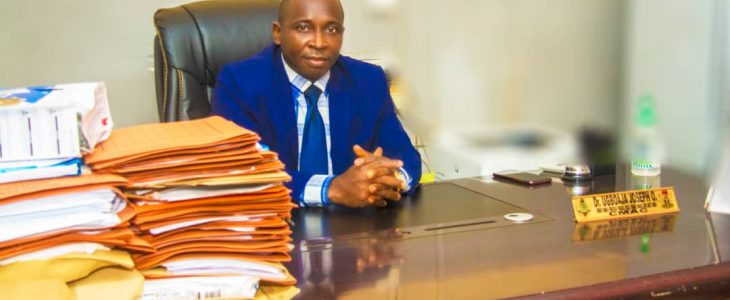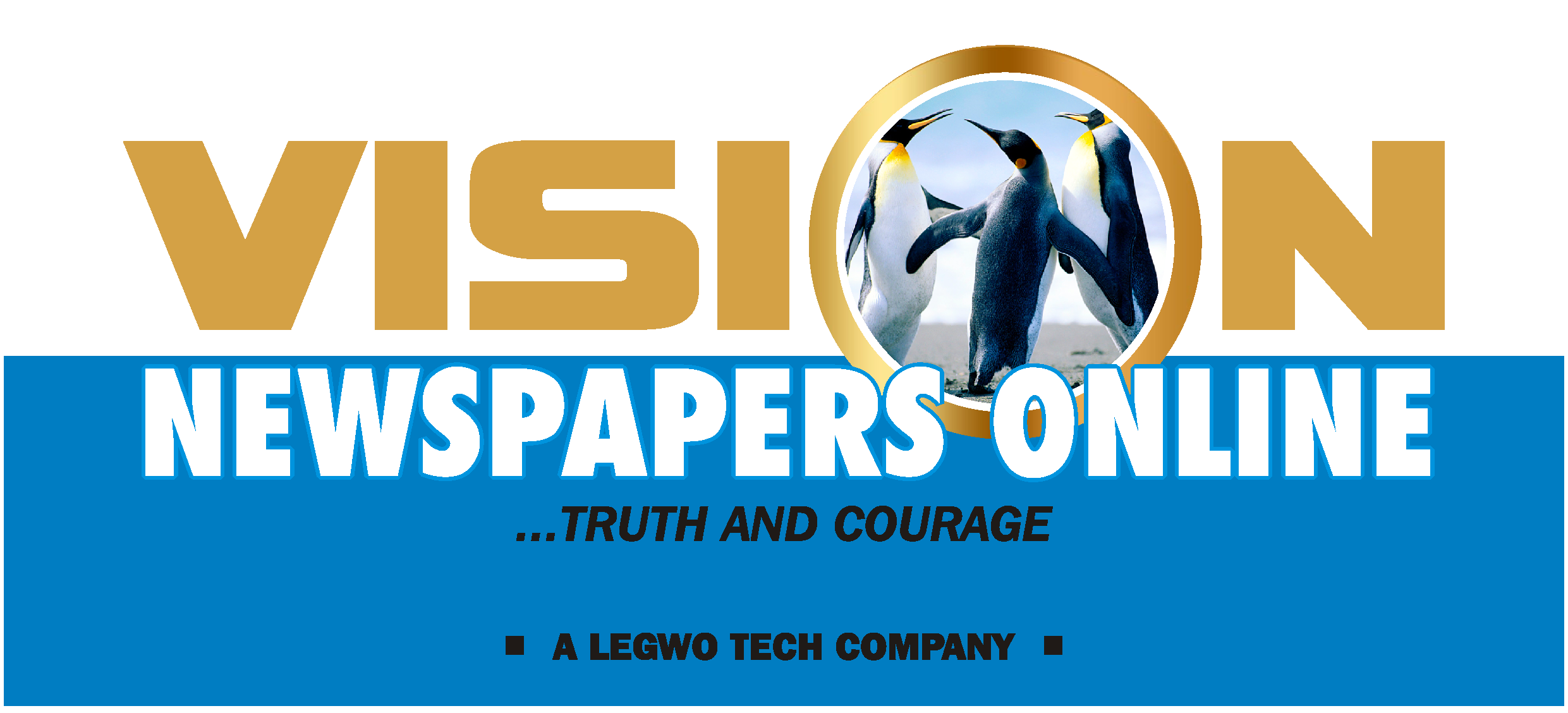
BY DR UGBOAJA JO
Let me welcome you to this edition of our leadership and management corner. Successful organizations rely on work teams to achieve their objectives. In this series, we will be discussing team building in organizations.

We will look at how to put together a work team, how to build a collaborative team, how to set objectives for your team and finally how to resolve conflicts that arise in your team.
Introduction:
Transforming your organization or company or department or unit requires setting your aims and objectives which are derived from your vision and in alignment with the institutional vision and goals. To achieve this requires the pulling together all the resources and assets in the institution foremost of which is human resources.

Many organizations recognize the benefit of having multiple people working together in a collaborative and cooperative environment to develop and deliver its mandates. For this reason, the use of work teams has become a routine way of managing organizations. In the series you will learn how to put together a formidable to allow you accomplish your objectives as a leader and manager.
Types of Work Teams:
Let’s start this series with learning some basic facts about types of Teams. This lesson discusses the different types of work teams commonly found in contemporary organizations, including functional, cross-functional and self-directed teams.
But what is a team?
In the workplace, a team can be defined as any group of people organized to work together and cooperatively to meet the needs of the organization. A team can be large or small, long-term or short-term (ad-hoc) and its makeup will depend on what it is made to accomplish. A team might be departmental or cross-functional depending on which will work best for the objective.
Functional teams or departmental/unit teams are composed of organizational members from the same department working together to achieve a specific objective. A typical functional team will have several subordinates and a manager who has authority to manage internal operations and external relationships of a particular department or division of the organization.
These teams usually focus on issues that affect their department and ways to improve it. An example of a functional team is our Laboratory Quality Management System Committee/Team. Nowadays, many institutions or organizations have several functional teams working in their areas of specialties to achieve a common goal.
The next type of work team is the Cross-Functional Work Teams which are made up of experts from various departments to work together towards some organizational goal. Because these members are considered experts of their individual functional area, they are usually empowered to make decisions on their own and recommend to management for implementation.
This is the model that we are using largely at the Clinical Services department of NAUTH including the Quality improvement committee, the Covid-19 taskforce etc. This particular type of work team has an additional benefit of fostering inter professional collaboration and is particularly useful in the management of the Nigerian Tertiary Health institutions characterized by inter-professional rivalry and competition.
A self-directed work team is designed to provide employees a sense of ownership by allowing them to operate without a manager and by holding them accountable for their own performance. The functions that are usually performed by a manager, such as planning, scheduling, monitoring and staffing, are delegated to the self-directed work teams. These teams work with a lot of autonomy and leverage with minimal supervision from the management.
Personally, I love working with this kind of team, when the condition is right and i have the opportunity of choosing the team members.
In summary, effective management and transformation of modern organizations require team approach in order to harness the available human resource within the organization, give employees sense of belonging as well as mobilize them to work towards achieving institutional goals.
Forming an Effective Work Team
Before discussing how to build an effective team, we need to understand first what an effective team means. Let us briefly look at what an Effective Team in Organizations is and analyze some of its characteristics.
You may wonder how a team is different from an ordinary work group. Work groups are mainly for members to share information and make decisions so that each member can achieve his or her individual work goals. On a team, the members not only share information but also share responsibility for the team’s work.
The idea behind teams is synergy. With synergy members can accomplish more together than they could on their own.
Not all teams are successful at what they do. Perhaps you have worked on a team that spent too much time debating decisions or included members who did not take on a fair share of the work. Such teams would be ineffective.
Let’s look at some of the key characteristics of effective teams. The team should have an ideal size and membership which should be the minimum size needed to achieve the team’s goals, and include members with the right mix of skills and talents to get the job done. There should be a clear purpose and roles and all members need to understand it and accept the team’s goal and their role on the team. Open communication should be allowed to allow team members feel that their ideas are welcome.
The team should value diverse points of view and encourage open and honest discussion. There should be fairness in decision-making – ideally, teams should make decisions by consensus. When consensus is not feasible, teams will use fair decision-making procedures that everyone agrees on.
Finally, there should be Creativity and Accountability – Effective teams value original thinking and will produce new and unique approaches to organizational problems and members must be accountable to each other for getting their work done on schedule and following the group’s rules and procedures.
In addition to the characteristics we just discussed, teams need organizational support. Managers should make effective teamwork a high priority and offer rewards and incentives for good performance.
Teams take time to become a cohesive group and reach their performance potential. Managers can help teams reach their potential by taking steps to support team development. Since conflicts will inevitably arise, teams also need procedures in place to manage those conflicts.
Constructive conflict management can help a team become stronger and more cohesive. Finally, a strong and respected team leader is needed in helping a team stay on track to achieve its goals.
Having discussed some of the characteristics of an effective work team, let us now get down to knowing how to build one.
The important factors to consider include the purpose and structure of the team, the composition of the team especially the Team lead and how to align individual strengths with team goals Let’s start with one of the difficult decisions encountered in setting up a team- who and who are going to be on the Team?
Always remember that the most successful teams are made of people who are able to use their strengths maximally to contribute towards project goals. This lesson will discuss the how to achieve that. Let’s illustrate.
It’s 9 a.m. on a Monday morning, and your boss (CMD) walks into your office as CMAC to hand you a new project aimed at increasing the hospital clientele base over the remaining quarters of the year.
This was a Board decision taken at the recently held Board meeting. He gives you little direction besides to simply ‘get it done.’ Some of us had been in this kind of situation in our various organizations.
Fortunately for you, this is not your first time as a project manager, and you have many successful projects under your belt to help soothe the initial anxiety. From these past experiences, you understand the importance of choosing the right team members to help you accomplish your project goals.
There are many things for a team leader to consider when assembling a project team. Those most interested in maximizing efficiency and reaching a successful project outcome should be selected for their unique talents, strengths, and skills that align directly with the project goals. One thing you must understand clearly is that Strengths Matter! It’s no coincidence that the teams who are comprised of individuals who are working in their area of strength produce extraordinary results.
Strengths are preexisting skills, knowledge, and patterns of thinking that lead to one’s best performance. When team leaders align individual strengths with team goals,(we will soon discuss this) they create a unique opportunity to maximize the potential of those individuals, the team and the organization.
It’s important to bring on board Team members who believe in the vision of the institution and recognize the value they bring to the group and can fully engage in the project because they see the potential for growth.
Here, work is completed efficiently and in a timely manner too because team members are capable enough to complete work with little guidance or intervention. So, how does one make this happen? Is there a magical formula for choosing the right people for the job?
Of course, there is not! And yet to individual strengths must be aligned to Team goals. Determining which individuals will be best for your project does take a bit of work, but it is a task worth undertaking. The following six steps can help guide you during your team selection process as you work to align team member strengths to project goals.
Firstly, Define Project Goals and that simply is to understand your project goals and what knowledge and skills will be required to reach those goals. For example, increasing clientele base over the next quarters will most certainly require individuals who are strong in services quality improvement, customer services and staff strength. Individuals with good PR skills are also helpful.
When you have assembled the team, break down the Project Goals into smaller, achievable tasks. If we consider the areas mentioned previously, that project team will comprise such task team/subcommittees as community/stakeholders engagement, staff attitude improvement, infrastructural improvement etc. When you have done this, make a list of attributes, or characteristics you’d like to see demonstrated by your team members.
These attributes should align with project goals as well as contribute to a positive collaborative environment. Attributes for this team would include creativity, forward-thinking, strong communication skills, strong people skills, ability to work well in collaborative settings, deadline-driven, and specialized skills in the area in which they would be assigned such as already mentioned.
Then Recruit Team Members once you know what you want out of your team members and how many you will need, it’s time to recruit them. You can reach out to other resource within the organization to help suggest members of the team. In this instance, I find the departmental or unit managers very well or other members of staff who have worked in a meeting the employee.
The next phase is to get to Know Your Team: Now that your team has been selected you will want to sit down with your team members and explain why they were chosen to participate on the team. You will want to learn what their aspirations are and demonstrate how their contributions to the team will work towards them.
Explain how team members can take advantage of each other’s strengths during the project to help to build strong collaborative relationships.
Finally, Synchronize Members Strengths to Performance Expectations: One final thing to do is develop performance expectations that also coincide with individual strengths and project goals.
Spend some time working with your team members to set goals based on their core competencies. This will only further help team members to feel a sense of ownership over their roles and responsibilities within the team.
In situations in which a project team is already formed, the team leader still has the opportunity and obligation to align members’ strengths to project goals.
The same steps will be followed outside recruitment of team members. Here, rather than contacting department managers, you simply talk to your team members directly. You would spend some time asking them, sometimes privately what they feel their strengths are and how they can assist the team in reaching its goals.
You can also get the other team members involved and ask them to fill out a questionnaire what they believe their teammate’s strengths are. Believe it or not, this can actually serve as a great team building activity, where team members get to learn more about themselves and each other. I have used it a lot and it’s really amazing.
A little note on the Team leader
Of all the members of a team, the Team leader is the most important and should be someone who can provide direction, instructions and guidance to the team for the purpose of achieving the project goal.
An effective leader will know her team members’ strengths, weaknesses and motivations. Their job is to get the assigned tasks done by using all of the resources available to them, including the team members. They take responsibility for the activities of the team.
They are responsible for developing and implementing a timeline their team will use to reach its end goal. Some of the ways team leaders ensure they reach their goals is by delegating tasks to their members, including themselves.
A team leader should be able to develop a strategy the team will use to reach its goal, provide any training that team members need, communicate clear instructions to team members, listen to team members’ feedback and monitor team members’ participation and commitment to the goal of the team.
The team lead should be able to create and distribute periodic reports to the appropriate authority on the team’s progress
To build a successful team, as the leader, you need to get to know all the team members on one-on-one so that you understand their strengths and weaknesses. You’re also likely to learn what drives each team member and discover what motivates them to excel beyond expectations.
You’ll also need to set clear roles and responsibilities for each team member. It’s important to remember that as a team, each person will rely on the other members. The roles will be interconnected and will have to be structured to accommodate this. The expectations should be clear and communicated to each member.
You should ensure that every person has equal opportunities for development so that any weaknesses can become strengths and encourages different viewpoints. Each person on a team will have different past experiences, opinions, and strengths. While this can be a challenge, it also can be a great benefit to the team environment. The TL should not allow negative remarks to be made. This will allow for free thinking and contribution and will help each member feel secure in sharing their ideas.
As the Team leader, you are generally responsible for the day-to-day operations of the team. You schedule meeting times and agenda. In these review meetings, the task teams will report on their activities within the period against the program time schedule. It is extremely important that you keep team members focused and on track. You must relate regularly with the task team members. Team leaders are also expected to report their teams’ progress to a manager or higher-up member of staff just to assure the organization’s leaders that they are on track.
In summary, one of the most effective ways to build a project team is to search for individuals who possess strengths that directly align with project goals. The benefits of doing this include maximizing efficiency, shorter turnaround times on projects, increased employee engagement and ownership over the project, less demands on management to guide and direct team members, and the opportunity for team members to help one another using their individual strengths.
The Team leader is the most important member of the team and should be someone who can provide direction, instructions and guidance to the team for the purpose of achieving the project’s goal. Thank you for reading. Next week, we continue with stages of team development, how to manage a team including monitoring its activities and how to implement team accountability.
